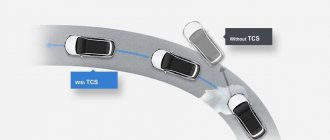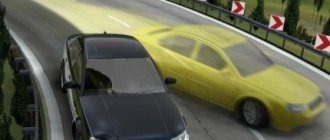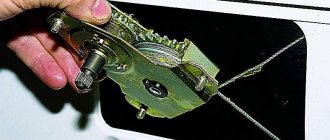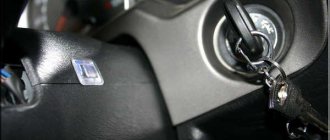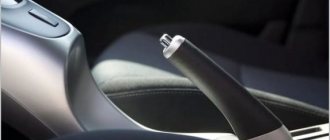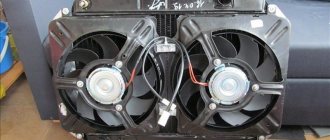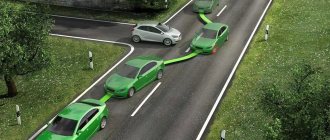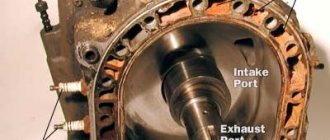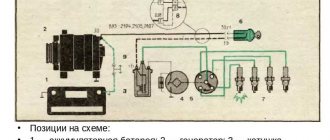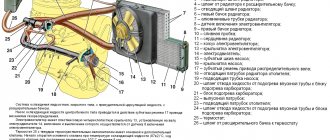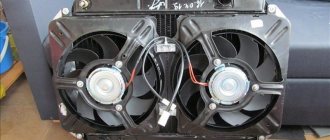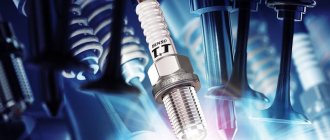Darkness and inattention are the main enemies of safe road traffic, which are often responsible for accidents. If in the first case the driver and pedestrians require a more responsible attitude towards how they behave on the road, then the dark time of day is a natural reason that cannot be eliminated.
No matter how attentive a driver is while driving a car at night, his eye still has certain limitations, which is why he may not see an obstacle on the road. To make things easier for modern drivers, well-known car manufacturers have developed the nva (night view assist) system or night vision assistant.
Let's consider what is included in this device, how it works, what types of devices exist, as well as their advantages and disadvantages.
What is a night vision system
For many who hear about this system, it is more associated with feature films of the action genre. In such paintings, soldiers of elite units wear special glasses that allow them to see in pitch darkness. It is worth noting that this system has only recently been used in cars. Before that, it was actually used by military structures.
Most luxury cars receive this device as standard. In expensive versions, the active and passive safety system includes other equipment. For example, the car itself can recognize an obstacle and warn about the danger in time or even prevent a collision if the driver does not react in time. This increases vehicle safety.
In short, a night device is a device that is capable of recognizing a large object (it can be a pedestrian, a pole or an animal). Special sensors display an image of the road on the screen like a regular camera, only in most models the image has a black-and-white inversion of colors, and more expensive options show a color image.
Third generation
In the ground vehicle segment, Raytheon and DRS Technologies have been awarded a contract by the U.S. Army to design and develop the third-generation B-Kit airborne forward-looking infrared system, which will increase the detection and recognition range of ground forces from tactical platforms in extreme environmental conditions.
The contract, announced in April, will upgrade approximately 17,000 second-generation FLIR sensors in service with the Navy and Marine Corps, as well as international customers taking advantage of the Foreign Military Sales program.
According to the US Department of Defense, the updated solution will provide dismounted soldiers and soldiers in vehicles with systems with four types of field of view, dual-band infrared imaging and optimized stabilization for mobile operations.
The modernization will help U.S. and allied militaries maintain a critical “superiority” over near-peers in the future operating space, said Duane Gooden, director of ground combat systems at Raytheon.
“With decades of experience delivering high-performance night vision systems to the U.S. Army, our team is uniquely equipped to help maintain our Army's combat superiority. Third-generation FLIR dramatically increases the range of ground vehicle sensors in all conditions, allowing our military to detect and stop the enemy.”
What is it for?
The night vision system allows the driver to:
- In the dark, see the obstacle in advance and avoid an accident;
- There may be foreign objects on the road that do not reflect the light of cars in the same way as a road sign. Due to the speed of traffic, the range of headlights may not be enough for the driver to react in time. This is especially acute when a person is walking along the side of the road, and another car with a bright light is driving in the opposite direction.
- Even if the driver drives the car carefully, it is especially difficult at dusk, when daylight has not yet disappeared, but complete darkness has not yet set in. Under such conditions, the vehicle's headlight may not produce enough light to allow the driver to monitor the road boundaries. The device allows you to more clearly determine where the road ends and the shoulder begins.
It is no secret that only some species of animals see perfectly in the dark. A person does not have such an ability, so objects that poorly reflect the light of headlights pose a particular danger to road traffic. The human eye is able to distinguish only large objects and then only at a short distance.
Traffic makes the situation even worse - even if the driver manages to recognize an obstacle nearby, he will have too little time to prevent a collision. To protect himself from trouble and the car from being hit, the driver has to either install brighter lights, which will greatly irritate oncoming drivers, or drive too slowly.
Installing a night vision device will make you feel more confident in such conditions. Depending on the device model, the system will either notify the driver about an obstacle that has appeared in the vehicle’s path, or the motorist himself will notice it when looking at the monitor. The distance at which the device recognizes objects allows the driver to avoid them or brake in time without sudden maneuvers.
Enhancing Image Quality
Most night vision devices use this technology. Night vision devices consist primarily of an electro-optical image intensifier that collects and amplifies infrared and visible light.
An electro-optical image intensifier converts photons into electrons and vice versa. A regular lens, called an objective lens, captures ambient light and some near-infrared light.
The collected light is then sent to an electron-optical amplifier. Most night vision devices operate using special batteries (N-Cell) or two AA batteries. The amplifier produces high voltage, about 5,000 volts. The electro-optical amplifier also contains a photocathode, which is used to convert photons of light into electrons.
When electrons pass through this amplifier, the atoms also release similar electrons, increasing the original number of electrons by several thousand times due to the use of Micro Channel Plate (MCP) in this amplifier. A microchannel plate is a tiny glass disk with millions of microscopic holes made using fiber optic technology. Microchannel plates are in a vacuum, and metal electrodes pass along the edges of the disk. Each channel is approximately 45 times its width and acts as a photomultiplier tube.
Once the electrons from the photocathode hit the first electrode of the MCP (microchannel plate), they are accelerated and enter the glass microchannels.
As electrons pass through the microchannels, they release thousands of other electrons in each channel using a process called cascaded secondary emission. Essentially, the original electrons come into contact with the exciting atom side of the channel, thereby freeing other electrons. These new electrons also come into contact with other atoms, a chain reaction occurs, as a result of which tens of thousands of electrons flow out of the channel, although only a few thousand entered the channel. The most interesting thing is that all microchannels in the MCP are located at a slight angle (5 - 8 degrees). This is necessary for electrons to collide with other electrons.
Principle of operation
An important condition for the operation of this security system is the presence of a special camera. It is installed in the front of the car depending on the features of the device. This could be a separate video camera mounted in the radiator grille, in the bumper or near the rearview mirror.
